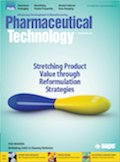News
Article
Pharmaceutical Technology
Leveraging Change for Continuous Process Improvement
Author(s):
Managing change and overcoming employee resistance and fear requires a proactive approach.
Hong Li/getty images

As the ancient Greek philosopher, Heraclitus, wrote back in 500 BC, “The only thing constant is change.” This is especially true for pharmaceutical development and manufacturing, where change can result from modification of facilities, utilities, equipment, computer systems, formulations, analytical methods, specifications, manufacturing and cleaning processes, vendors and components, and documentation.
Depending upon the criticality of the change, some changes may even affect the safety, identity, strength, quality, or purity of the product. Others may trigger the need for new regulatory filings. Managing all this change is perhaps the most important part of any life-sciences quality program.
Change management plays a crucial role in ensuring that processes are, and remain, in control throughout a product’s lifecycle. It is, therefore, essential to develop and implement a compliant, effective, and efficient change-management system in accordance with cGMPs and FDA guidelines, notably the revised process validation guidance of 2011 (1).
The whole concept of managing change has been evolving over the past few years, moving from “change control,” a term that implied the need to restrict change. Now, the term “change management” is used to describe the oversight of the change process. This oversight must be in place during visualization, initiation, evaluation, and pre-implementation approval, as well as implementation and post-implementation approval of the change, to help ensure that the outcome of any change remains as originally intended. In the future, the term may be “change championship,” taking into account the dynamic results of corporate mergers and de-mergers and the human element in change management, making the process more holistic and realistic.
This article discusses the regulatory aspects of change management and how it can be used, not only to ensure regulatory compliance, but for continuous quality improvement.
A validated system may go through more than one change at a single time or at different times during a product’s lifecycle. Maintaining proper documentation and an audit trail of all changes is imperative to ensure the continued state of control. FDA expects pharmaceutical manufacturers to implement a compliant, effective, and efficient change-management system, and its inspectors look for such a system during most cGMP inspections.
Priority: maintaining control through robust written procedures
FDA’s current cGMP regulations 21 Code of Federal Regulations 210 and 211 (2) do not explicitly mandate a change-management system, but they do require establishing written procedures that will maintain a state of control. Therefore, it is necessary to have a well-designed change-management system in place to comply with the regulations and applicable guidelines.
The FDA Guidance for Industry, Q7A Good Manufacturing Practice Guidance for Active Pharmaceutical Ingredients (3) and the FDA’s Guidance for Industry, Quality Systems Approach to Pharmaceutical CGMP Regulations (4) suggest implementing the change control program.
Both of these guidance documents use the term “change control” rather than “change management.” The transition from “change control” to “change management/change control” can be clearly seen in the FDA Guidance for Industry, Q9 Quality Risk Management (5).
Tracing the evolution of change management
In 2009, the publication of FDA/ICH’s Q8(R2) Pharmaceutical Development (6) signaled further change when it emphasized the idea of a design space, wherein a change within the design space would not be considered a change from the regulatory post-approval perspective. This guideline expected applicants to develop a data-based design space derived from product and process knowledge gained throughout the product’s lifecycle.
In the FDA/ICH Guidance for Industry, Q10 Pharmaceutical Quality System (7), there is no mention of the term “change control.” The term has been completely replaced by “change management,” and listed as one of the four key elements of a pharmaceutical quality system, that are capable of ensuring continual improvement.
The Q10 guidance document demonstrated a complete transition from attempting to control change to managing changes for process improvement. The goals allow pharmaceutical manufacturers, not only to achieve compliance but to gain business advantage.
Documenting change in a unified company-wide system
Pharmaceutical manufacturers are expected to implement well-documented, detailed change-management procedures to ensure that a company-wide change-management system is in place; individual departments should not have their own change-management systems. Depending on the size of the company and the complexity of its processes, the mechanism of implementing the change-management system will vary. Paper-based manual change-management systems may work reasonably well for smaller companies, but software-based electronic systems are generally needed for larger firms.
Any change-management system typically comprises the following essential phases in its development.
Initiation. Once the need for a change is identified, the person who suggested that change should formally draft a proposal for implementing the change. The proposal must define the change clearly and specify the reasons why it should be implemented. This proposal should be reviewed and approved by the head of the initiator’s department before it proceeds further.
Evaluation. Cross-functional teams formally review all proposed changes for the impact that they may have on the state of control as well as the regulatory filing status. Most companies have formal change-management boards or committees to evaluate the changes. While quality assurance and regulatory affairs departments are the most important members of such boards/committees, validation, manufacturing, and engineering are also typically involved in evaluating the change proposals.
Involving the business side
Depending upon the nature of the change, even the marketing, legal, and commercial departments may also be required to evaluate certain changes. The change-management board/committee evaluates all changes to determine whether or not to proceed.
After a change is approved for implementation, the committee/board also formulates the change implementation action plan. Taking various actions might be necessary to ensure that the change succeeds in achieving the intended purpose while simultaneously preventing unintended consequences.
Tracking. A manual or electronic documentation system is essential for any change-management system to efficiently track not only the implemented changes, but the data and documentation that must be generated to support them. Appropriate documentation must support regulatory filing status and a continued state of control, and should allow for full traceability. The supporting documentation should also include data generated to verify the effectiveness of any change after it has been implemented, as well as training records associated with the change implementation.
Training. All employees involved with the initiation, evaluation, and implementation of changes must be trained on the change-management procedure. Records for the training required by the change-management procedure must be appropriately maintained. Furthermore, implementation of some changes may also require some re-validation and revision of such controlled documents as standard operating procedures and batch records, which may necessitate additional training. Effective training and the documentation of that training are essential for the overall success of the change-management system.
Regulations do not require classifying the changes, and all changes that could affect cGMPs may be treated as equally crucial. It can be helpful, however, to rank changes in categories such as low, medium, and high, based on the risk they pose to the safety, identity, strength, quality, or purity of the product, and their potential impact.
Risk-based classification facilitates the development of a rational and data-driven action plan for implementing the changes. Many companies do not require that “like-for-like” changes go through a formal change-management process. For example, the replacement of equipment parts from the same manufacturer, and of the same model with the same specifications, is generally considered a like-for-like change.
Jose Luis Pelaez/getty images

Gaging the potential impact of change isn’t always easy
Assigning general categories to the changes based on their potential impact is not always easy. Each change should also be evaluated individually, because even some like-for-like changes may have an impact on the processes. For instance, some equipment replacement parts may come from the same manufacturer, be built to the same specifications, and based on the same model. Nevertheless, they may vary slightly in performance from piece to piece, depending upon the criticality of the process, and the manufacturing controls that have been exercised by the parts manufacturer.
For example, replacing tablet press dies and punches may result in varying tooling tightness. This change in tightness may require that operating parameters be adjusted after the tooling has been replaced. Overlooking actions associated with such changes may result in unexpected process variation.
It is also crucial to ensure that the change-management system reflects any changes that might have been made by materials suppliers and equipment vendors. Vendor audits should verify that an effective change-management system is in place at the vendor’s site.
Furthermore, quality agreements should be worded so that suppliers must notify sponsors of any critical changes that they make to the manufacturing process and/or specifications as soon as possible. Any changes that are not communicated by vendors may affect processes, jeopardizing the state of control, and the overall change-management system.
Moving away from “command and control”
Until recently, pharmaceutical manufacturers were constrained by restrictive regulations that did not facilitate the adoption of new technologies. This has caused the life-sciences industry to lag behind other industries in the use of the most modern IT or process-control tools, for example.
This regulatory “command-and-control” approach changed in the last decade, when FDA published “Pharmaceutical cGMPs for the 21st Century-A Risk-based Approach” (8). This report marked a shift from a restrictive to a more liberal risk-and-science-based regulatory approach, throughout a product’s lifecycle. This new approach facilitated the adoption of constantly evolving technological advancements and innovations. A well-designed change-management system should enable manufacturers to leverage opportunities to adopt more modern technologies and implement continuous improvement initiatives. Because flexibility and change are the precursors to improvement, any change-management system should be conceived so that it provides an opportunity for continuous improvement.
Leveraging change management for process improvement can be compared to driving an automobile on four wheels. Each of the wheels must be equally strong and balanced if the ride is to be smooth. For change management, the wheels are:
- Awareness
- A proactive approach
- Interdepartmental communication
- Timeliness.
Utilizing all four wheels can require a change in mindset. Employees, including those in quality assurance and control (QA and QC), can grow so accustomed to performing certain activities in certain ways that they do not like being taken out of their comfort zones.
To minimize resistance to change, managers should make employees aware of the reasons for the change and the benefits that will result from it. This outreach will enable the achievement of process improvement goals.
Employees throughout any organization should be aware of the connections from change management, to process improvement and business benefits. To minimize resistance to change, managers should make employees aware of the reasons for the change and the benefits that will result from it.
Seeing change in a positive light
Taking a proactive approach is also important but represents a break from the past, when changes were only accepted when absolutely necessary, or when forced by circumstances (e.g., when a vendor of a specific type of equipment went out of business).
Life-sciences companies should empower their employees to look, actively, for changes that can bring such benefits as improved quality and yield, easier operation and safer processes, reduced cycle time, and manufacturing cost. Product knowledge and process understanding gained throughout the product lifecycle can lead to the proactive changes that can result in process improvement.
Breaking down the silos that can impede progress
Effective change management also requires breaking down the silos that can separate different departments and functions. Change management is a company-wide effort that requires effective communication and coordination among various departments. All departments that would potentially be affected by the change need to be involved in the overall change-management process.
Generally, people want to be associated with positive activities, and communication improves when people work on projects that are seen as progressive and constructive. Emphasizing the potential for process improvement resulting from the change will help improve cross-functional communication and cooperation, and help the change-management process reach its broader business goals.
Any unnecessary delays during the change-management process can have heavy compliance and business costs. It is essential to ensure that all activities and timelines are well thought out and planned in advance to prevent missed opportunities.
As the global business environment continues to become increasingly competitive, life-science companies cannot afford to be content with merely complying with regulations. Such compliance is just the cost of admission, or the minimum requirement, and compliance won’t provide any competitive edge unless it is combined with continuous improvement.
Some companies are still struggling to understand the implication of FDA’s risk-and-science-based lifecycle approach for adopting technical innovations, and fostering continuous improvement. However, others have started taking advantage of this change in thinking by formally incorporating the “process improvement” and “innovation through sound science” concepts into their change-management systems.
A well-conceived change-management system will take advantage of, and echo, FDA’s current thinking about risk-and-science-based regulation. Embracing change, and managing it proactively and well, can help companies go well beyond compliance to continuous improvement.
References
1. FDA, Guidance for Industry, Process Validation: General Principles and Practices (Rockville, MD, January 2011).
2. Code of Federal Regulations, Title 21 Food and Drugs (Government Printing Office, Washington, DC), Part 210 and 211.
3. FDA, Guidance for Industry, Q7A Good Manufacturing Practice Guidance for Active Pharmaceutical Ingredients (Rockville, MD, August 2001).
4. FDA, Guidance for Industry, Quality Systems Approach to Pharmaceutical cGMP Regulations (Rockville, MD, September 2006).
5. FDA, Guidance for Industry, Q9 Quality Risk Management (Rockville, MD June 2006).
6 FDA, Guidance for Industry, Q8(R2) Pharmaceutical Development (Rockville, MD, November 2009).
7. FDA, Guidance for Industry, Q10 Pharmaceutical Quality Systems (Rockville, MD, April 2009)
8. FDA “Pharmaceutical CGMPs for the 21st Century-A Risk-based Approach” (Rockville, MD, September 2004).
Article DetailsPharmaceutical Technology
Vol. 39, No. 10
Pages: 62–68
Citation: When referring to this article, please cite it as P. Bhandola, “Leveraging Change for Continuous Process Improvement,” Pharmaceutical Technology39 (10) 2015.
Newsletter
Get the essential updates shaping the future of pharma manufacturing and compliance—subscribe today to Pharmaceutical Technology and never miss a breakthrough.






